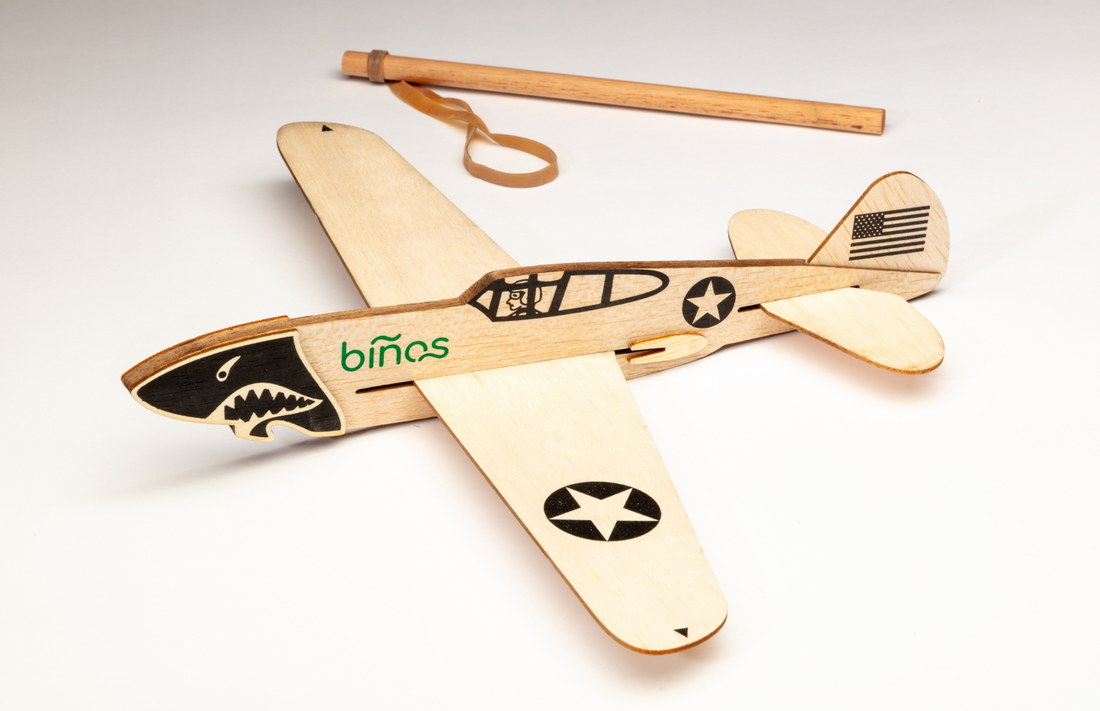
History of Modeling with Balsa Wood
Share
The Fascinating History of Modeling with Balsa Wood
Balsa wood has been a cornerstone of modeling and crafting for decades, offering a unique combination of lightweight strength and versatility. Whether you’re a hobbyist, an educator, or an engineer, balsa has played a significant role in model-making history. At Binos, we not only provide the highest quality balsa wood but also expert advice to help you make the most of your projects. Let’s take a journey through the history of balsa wood modeling!
Early Beginnings: A Natural Choice
Balsa wood has been used for centuries, primarily by indigenous South American people who crafted rafts, small boats, and lightweight structures from this buoyant material. However, it wasn’t until the early 20th century that balsa wood became a staple in model-making.
Model Airplanes Take Flight (1910s-1940s)
With the rise of aviation in the early 1900s, balsa wood quickly gained popularity as a material for model airplanes. Hobbyists and engineers alike turned to balsa due to its ease of carving and impressive strength-to-weight ratio. By the 1920s and 1930s, model airplane kits featuring balsa became widely available, allowing enthusiasts to construct detailed scale models.
During World War II, balsa wood was even used by the U.S. military for aircraft recognition training models. Some early remote-controlled aircraft also incorporated balsa wood for their lightweight and durable frames.
Expanding Beyond Aviation (1950s-1980s)
In the post-war era, balsa wood modeling expanded into various hobbies, including:
Model ships and boats: Balsa became a go-to material for detailed ship modeling.
Architectural models: Architects and designers used balsa wood to create small-scale building prototypes.
Automobile modeling: Balsa wood was commonly used in early car models before plastic became the primary material.
The 1960s and 1970s also saw an explosion in remote-controlled (RC) models, particularly planes, which relied heavily on balsa for their construction.
Modern Applications and Cutting Technology (1990s-Present)
While plastic and foam have taken over some markets, balsa remains essential in many industries today:
RC airplanes and gliders: Balsa wood continues to be a favorite material for constructing high-performance model aircraft.
Educational projects: Many schools use balsa wood for engineering and bridge-building competitions.
Balsa dragster competitions: Balsa wood is a key material in dragster competitions, where students and hobbyists design and race lightweight, aerodynamic cars as part of STEM-based learning programs.
Arts and crafts: DIY projects, dioramas, and artistic models still benefit from the versatility of balsa.
With advancements in technology, cutting balsa wood has never been easier. Today, hobbyists and professionals alike have access to various cutting tools, including:
Hand tools: Traditional hobby knives and saws remain popular for detailed handcrafting.
Scroll saws and band saws: Perfect for cutting intricate patterns and larger pieces.
Laser cutters: High-precision laser cutting machines, such as those from Glowforge, Epilog, and OMTech, allow for intricate detailing and custom designs with balsa wood.
Cricut Maker 3: This versatile cutting machine is capable of cutting balsa wood with precision, making it an excellent choice for hobbyists and professionals alike.
Binos: Your Trusted Source for Balsa Wood and Expert Advice
At Binos, we are passionate about helping modelers, hobbyists, and professionals find the best balsa wood for their projects. Whether you’re working on an intricate architectural model, a high-speed RC plane, or an educational prototype, our team of experts is here to assist you with any questions you may have.
Be sure to check out our Products for the best deals on high-quality balsa wood and the latest cutting tools available for purchase. Happy modeling!
